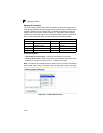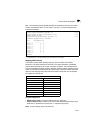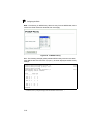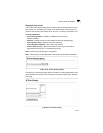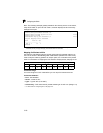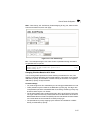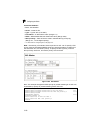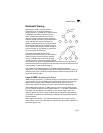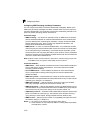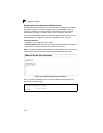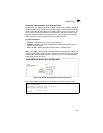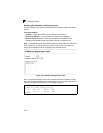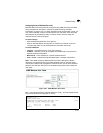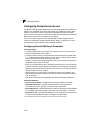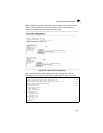
Configuring the Switch
3-140
3
Configuring IGMP Snooping and Query Parameters
You can configure the switch to forward multicast traffic intelligently. Based on the
IGMP query and report messages, the switch forwards traffic only to the ports that
request multicast traffic. This prevents the switch from broadcasting the traffic to all
ports and possibly disrupting network performance.
Command Usage
• IGMP Snooping – This switch can passively snoop on IGMP Query and Report
packets transferred between IP multicast routers/switches and IP multicast host
groups to identify the IP multicast group members. It simply monitors the IGMP
packets passing through it, picks out the group registration information, and
configures the multicast filters accordingly.
• IGMP Querier – A router, or multicast-enabled switch, can periodically ask their
hosts if they want to receive multicast traffic. If there is more than one router/switch
on the LAN performing IP multicasting, one of these devices is elected “querier”
and assumes the role of querying the LAN for group members. It then propagates
the service requests on to any upstream multicast switch/router to ensure that it will
continue to receive the multicast service.
Note:
Multicast routers use this information, along with a multicast routing protocol such
as DVMRP or PIM, to support IP multicasting across the Internet.
Command Attributes
• IGMP Status — When enabled, the switch will monitor network traffic to determine
which hosts want to receive multicast traffic. This is also referred to as IGMP
Snooping. (Default: Enabled)
• Act as IGMP Querier — When enabled, the switch can serve as the Querier,
which is responsible for asking hosts if they want to receive multicast traffic.
(Default: Enabled)
• IGMP Query Count — Sets the maximum number of queries issued for which
there has been no response before the switch takes action to drop a client from the
multicast group. (Range: 2-10, Default: 2)
• IGMP Query Interval — Sets the frequency at which the switch sends IGMP
host-query messages. (Range: 60-125 seconds, Default: 125)
• IGMP Report Delay — Sets the time between receiving an IGMP Report for an IP
multicast address on a port before the switch sends an IGMP Query out of that port
and removes the entry from its list. (Range: 5-30 seconds, Default: 10)
• IGMP Query Timeout — The time the switch waits after the previous querier stops
before it considers the router port (i.e., the interface which had been receiving
query packets) to have expired. (Range: 300-500 seconds, Default: 300)
• IGMP Version — Sets the protocol version for compatibility with other devices on
the network. (Range: 1-2; Default: 2)
Notes: 1.
All systems on the subnet must support the same version.
2. Some attributes are only enabled for IGMPv2, including IGMP Report Delay
and IGMP Query Timeout.



